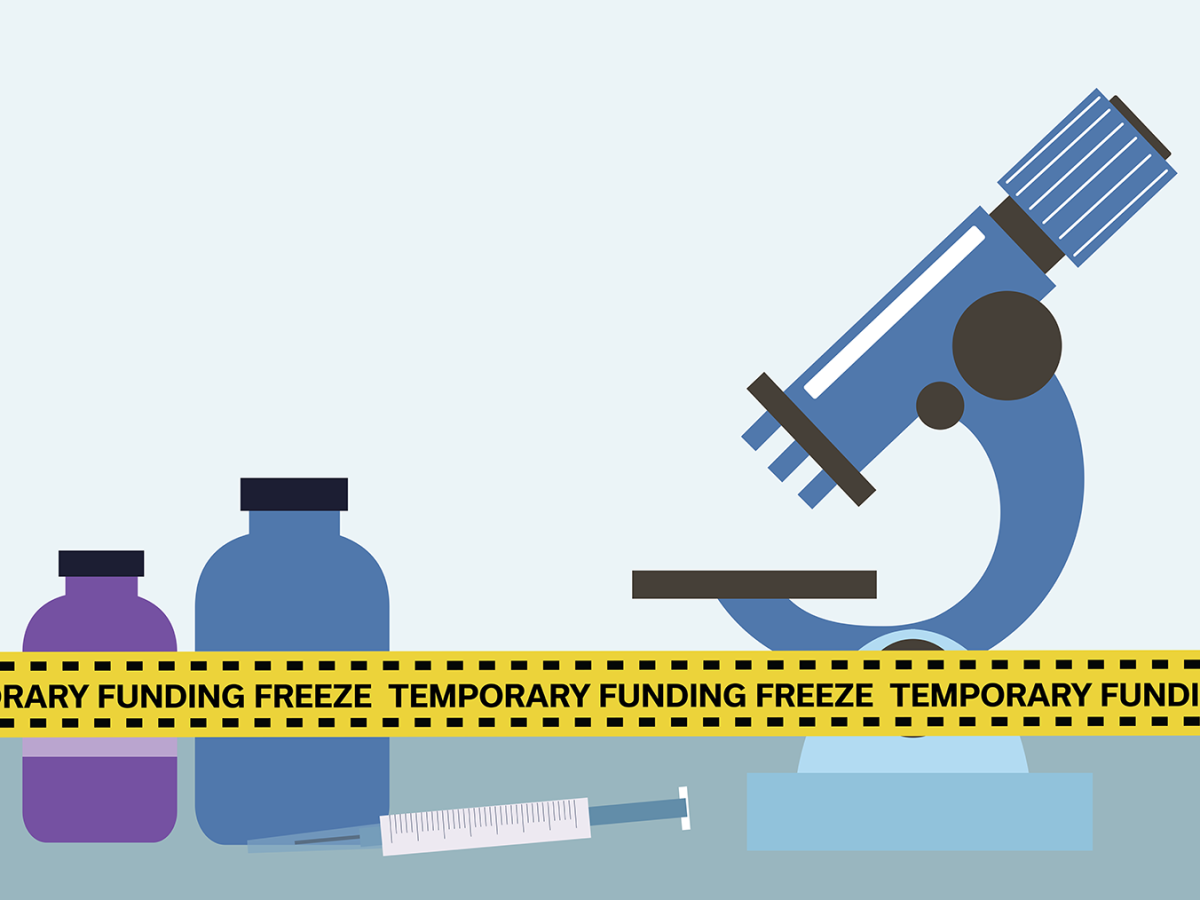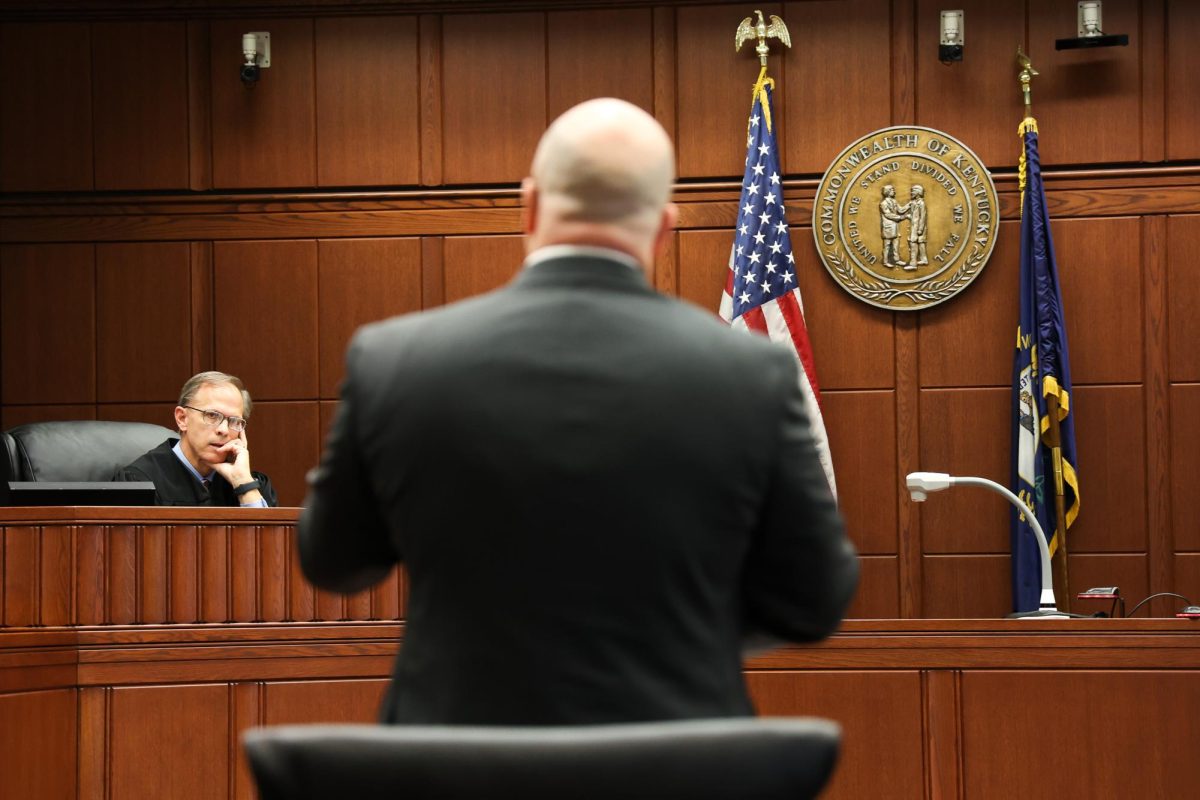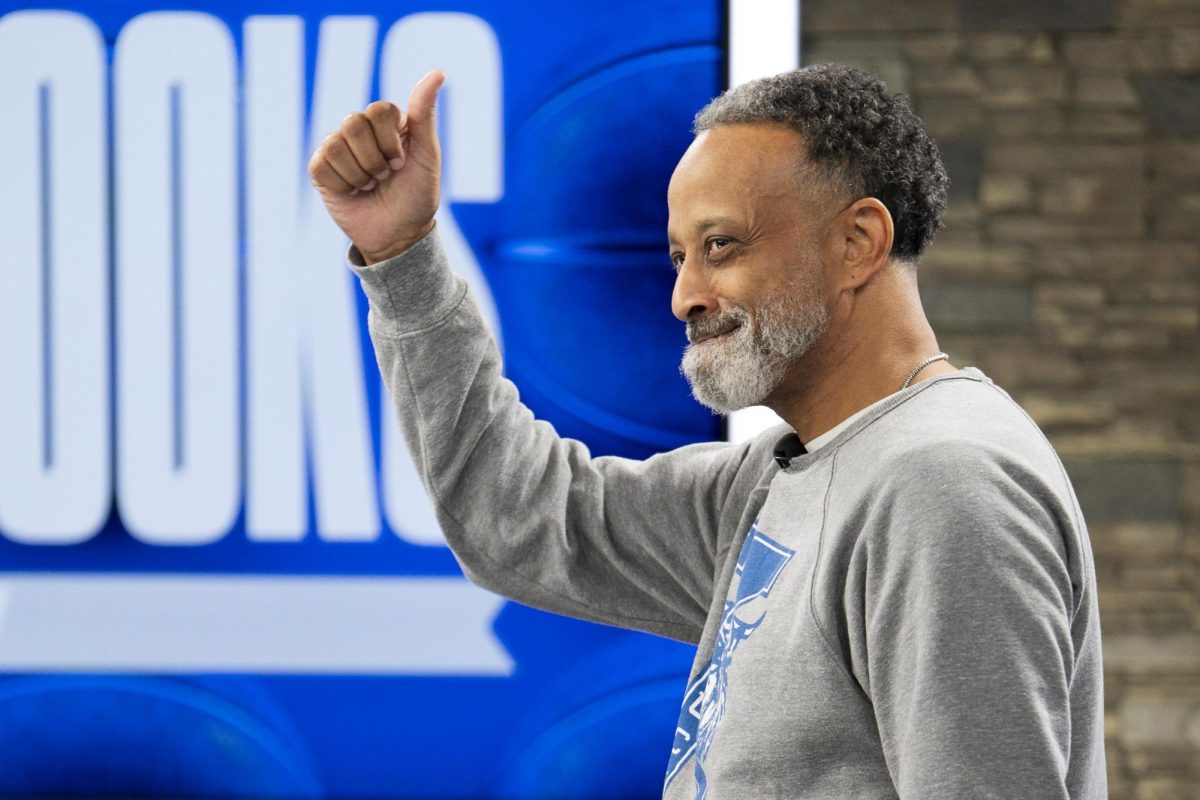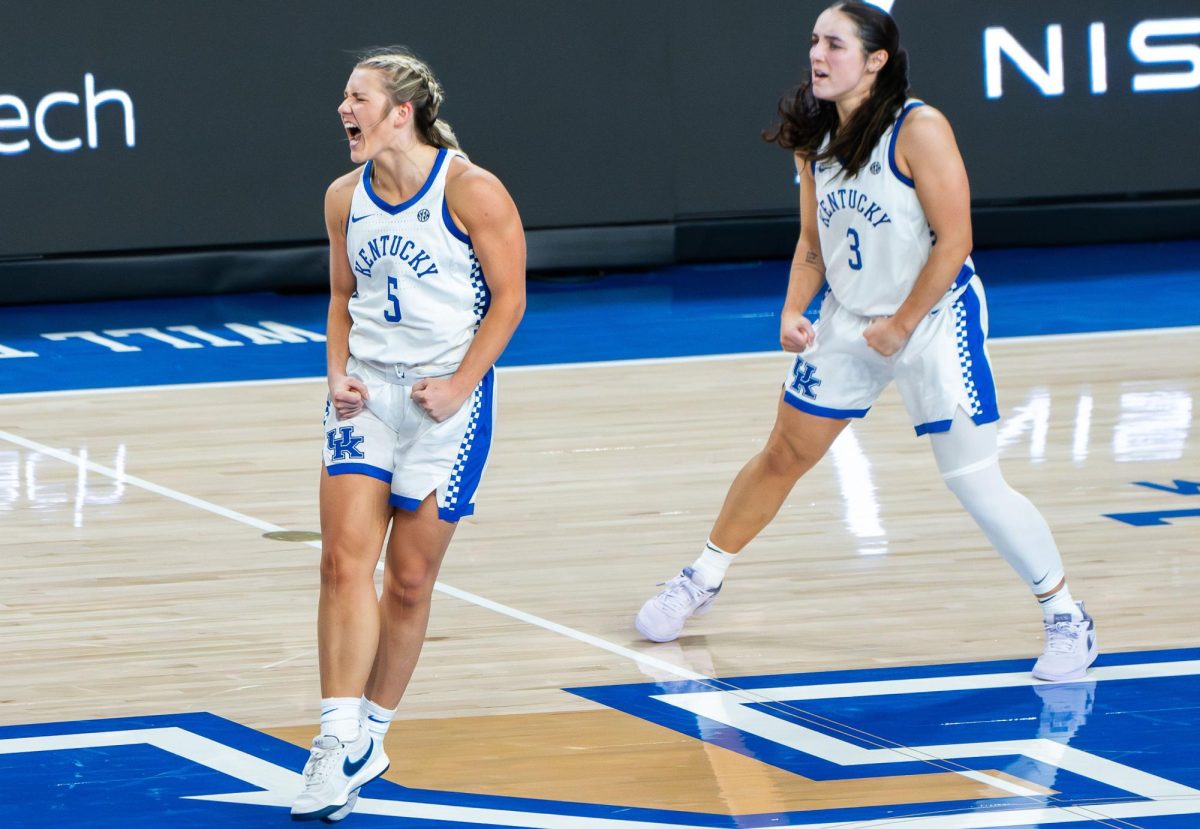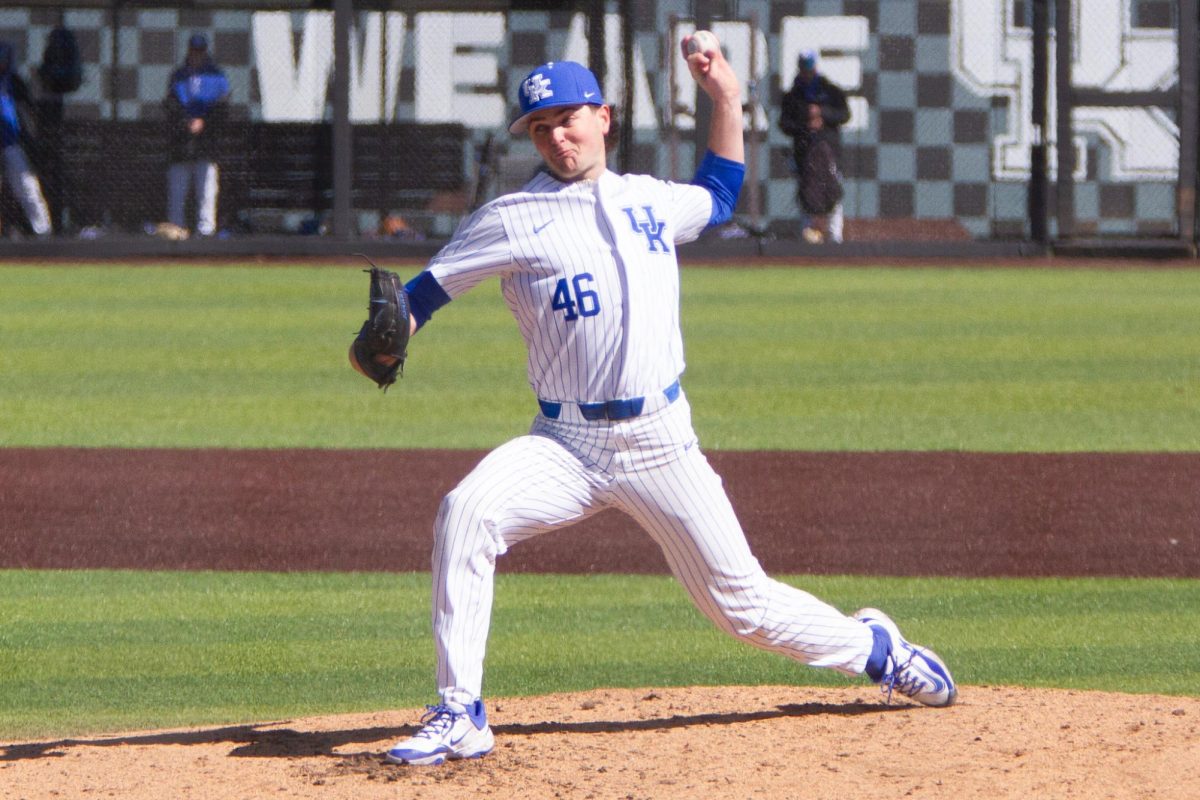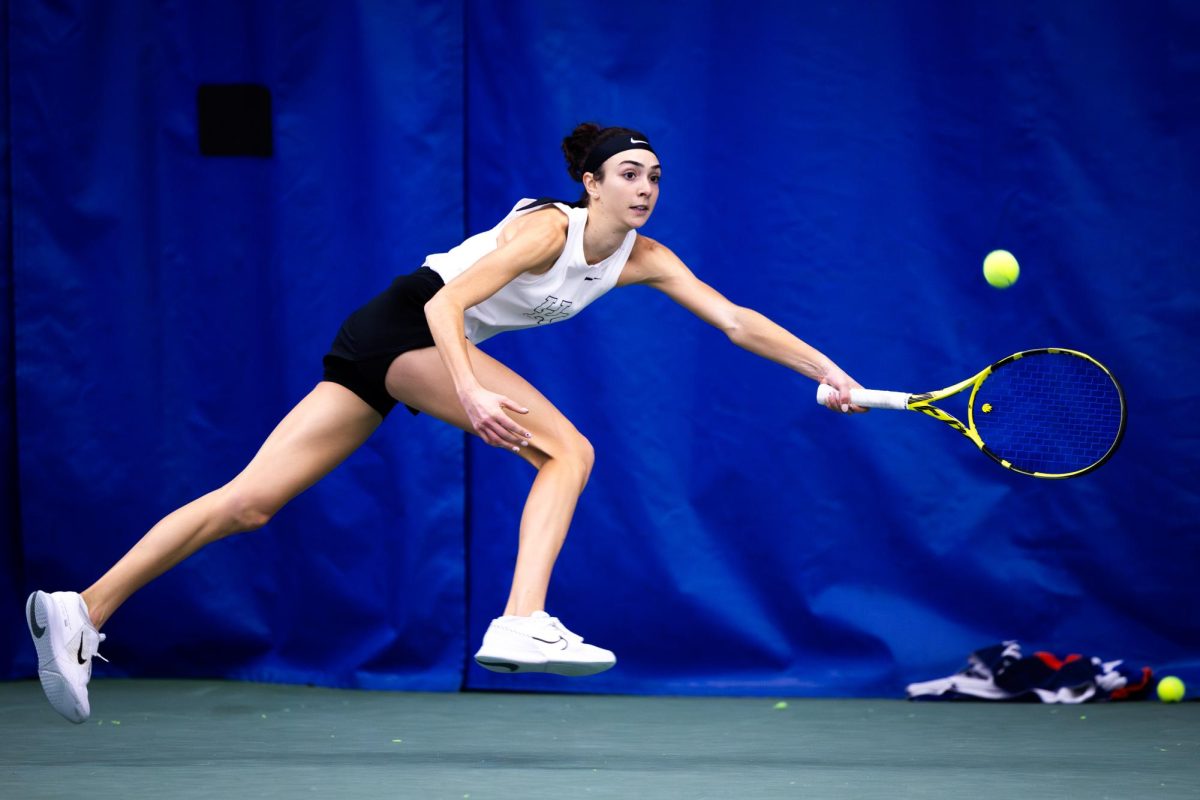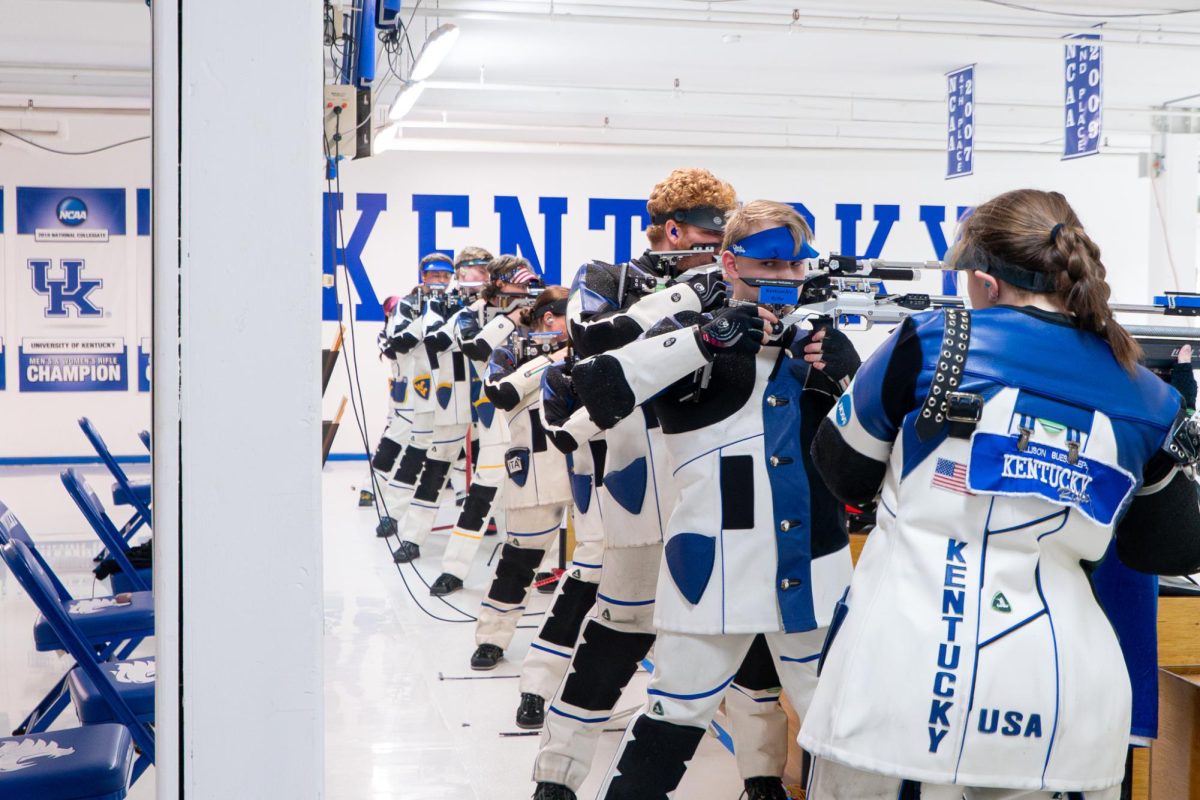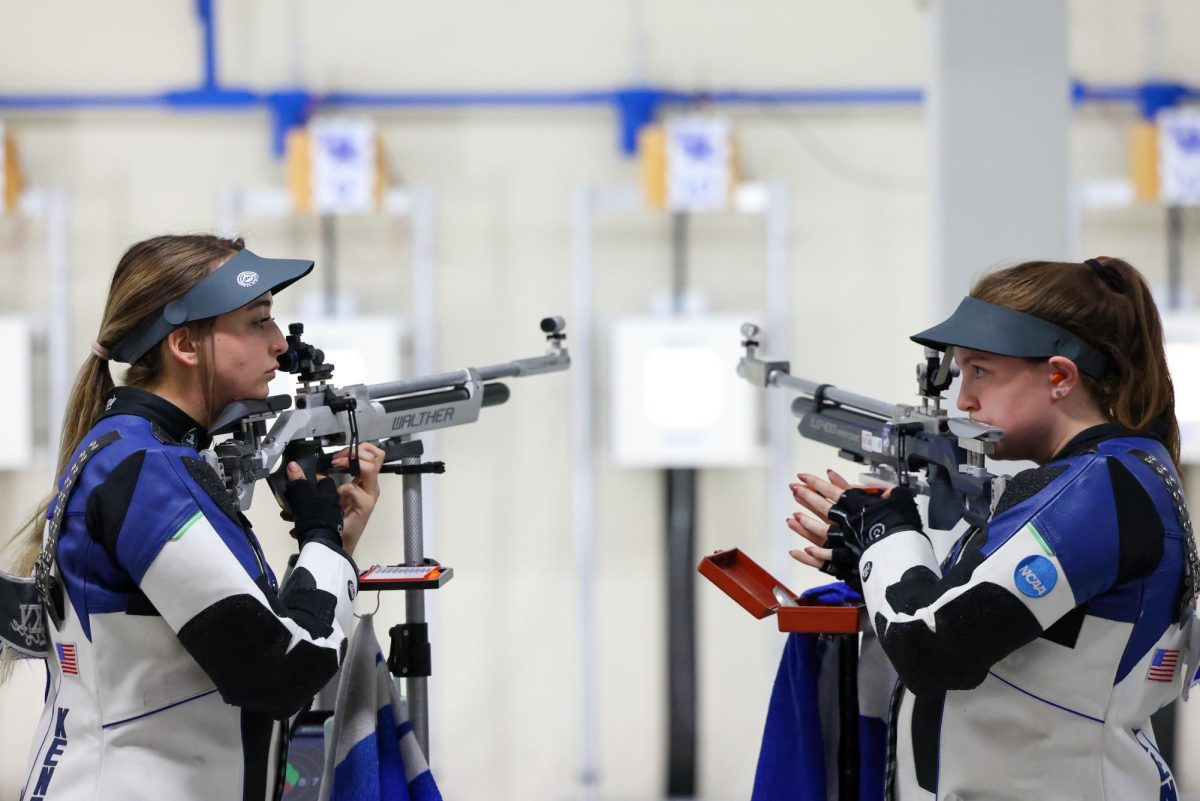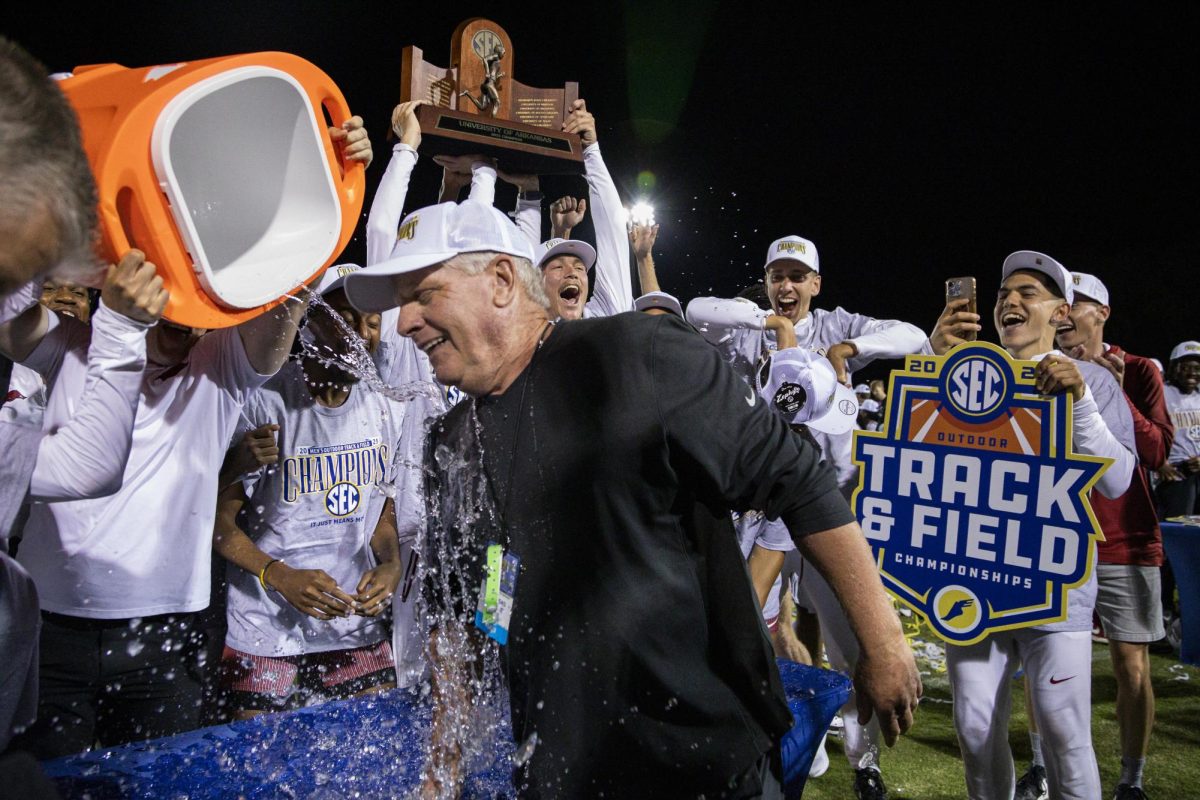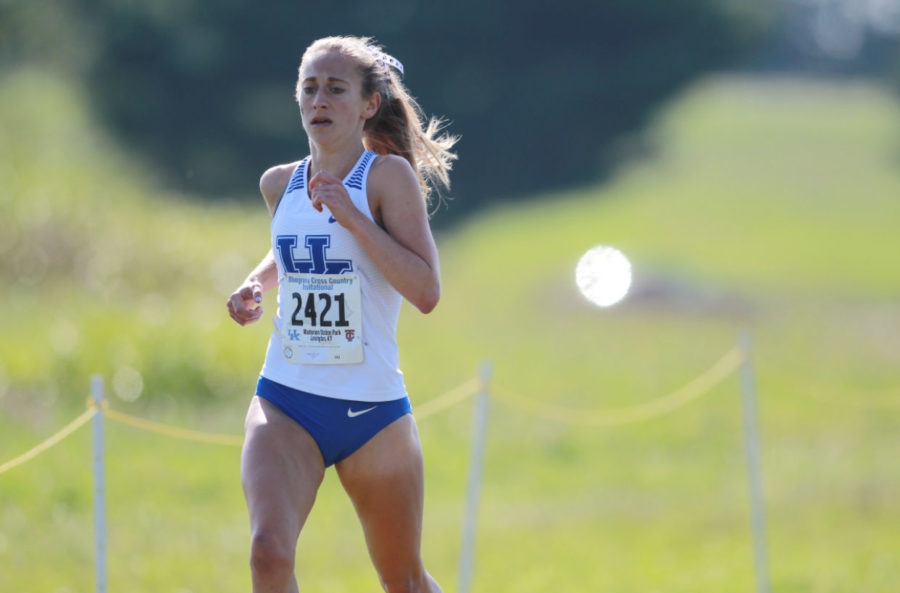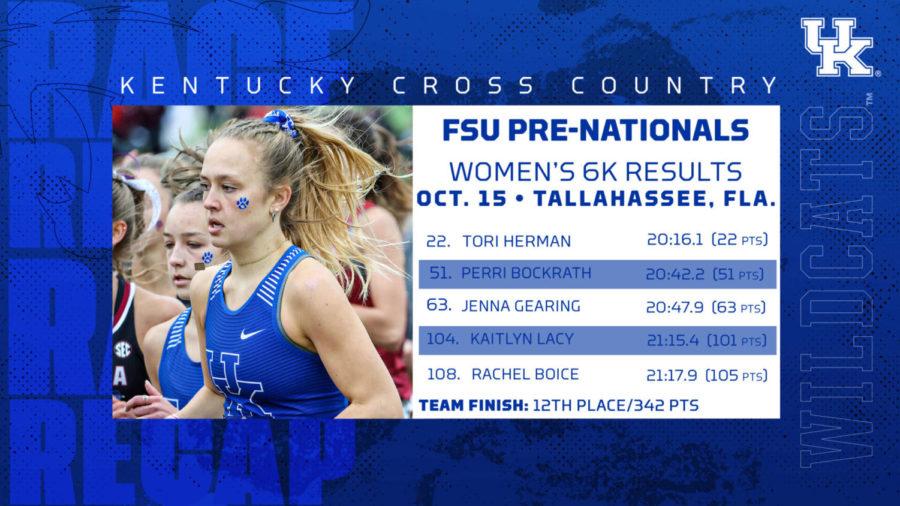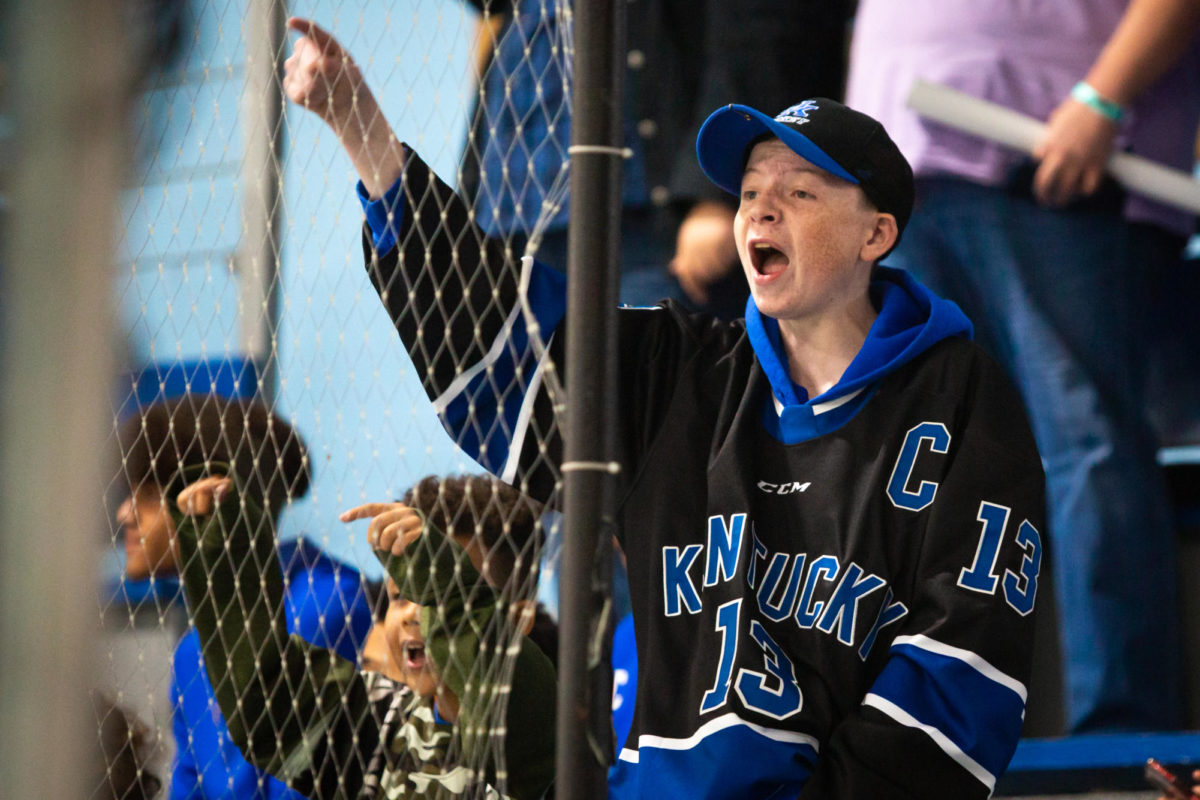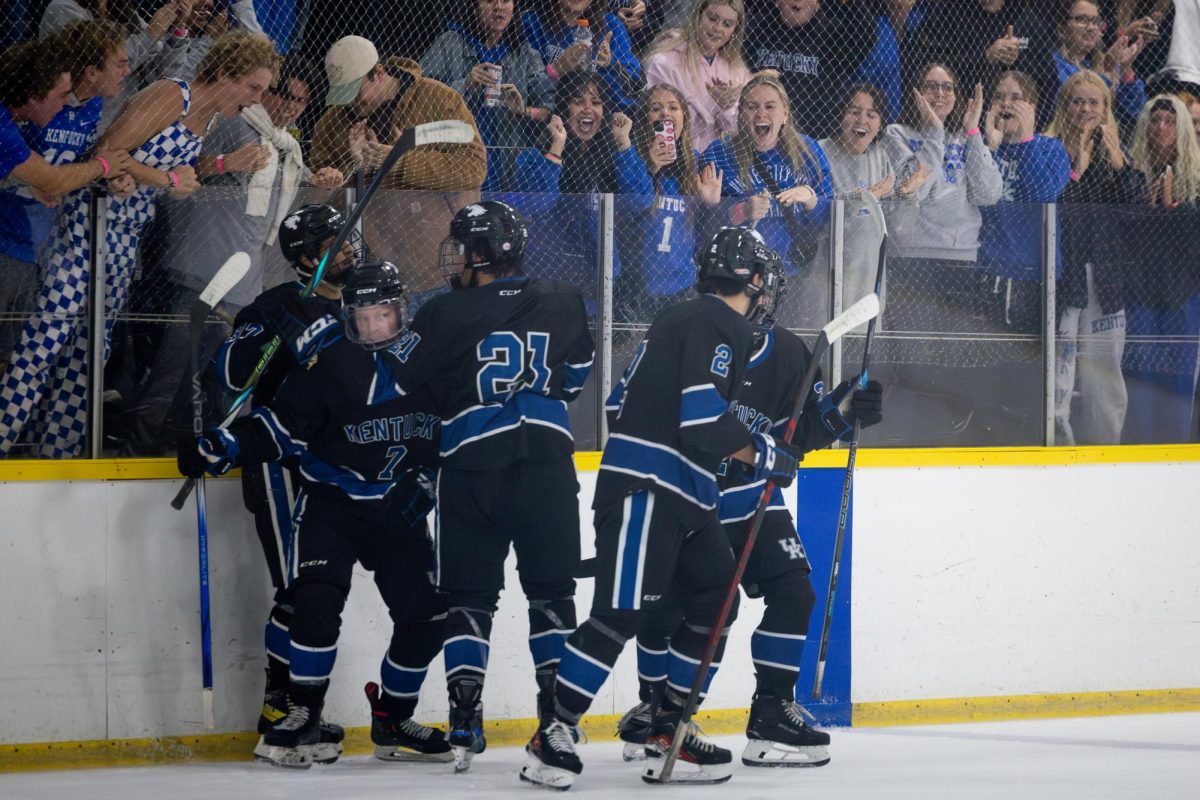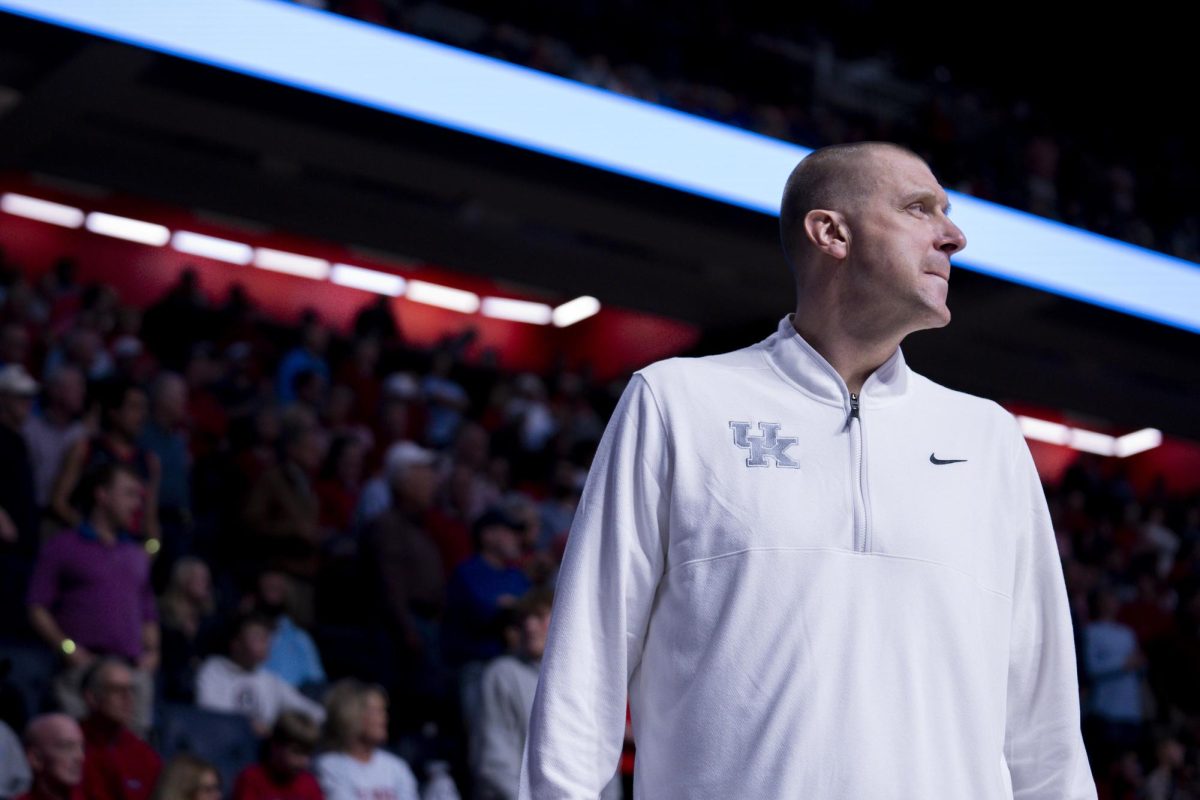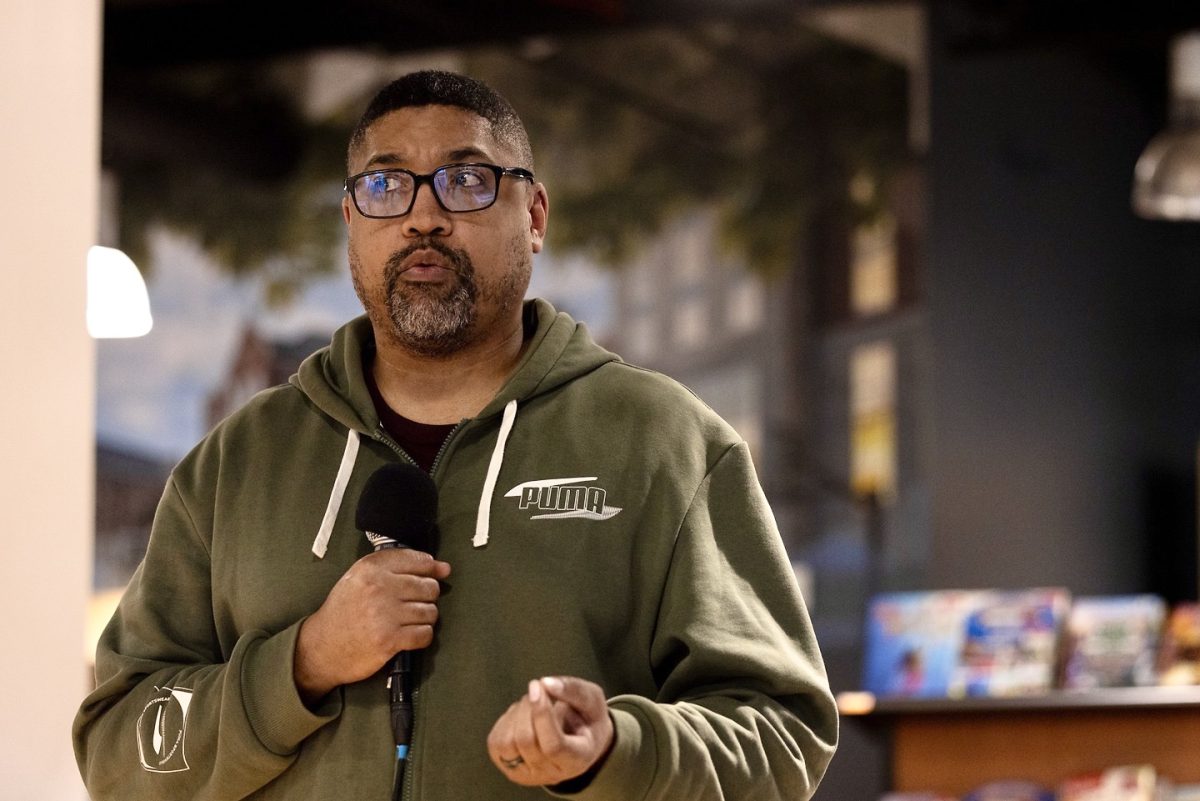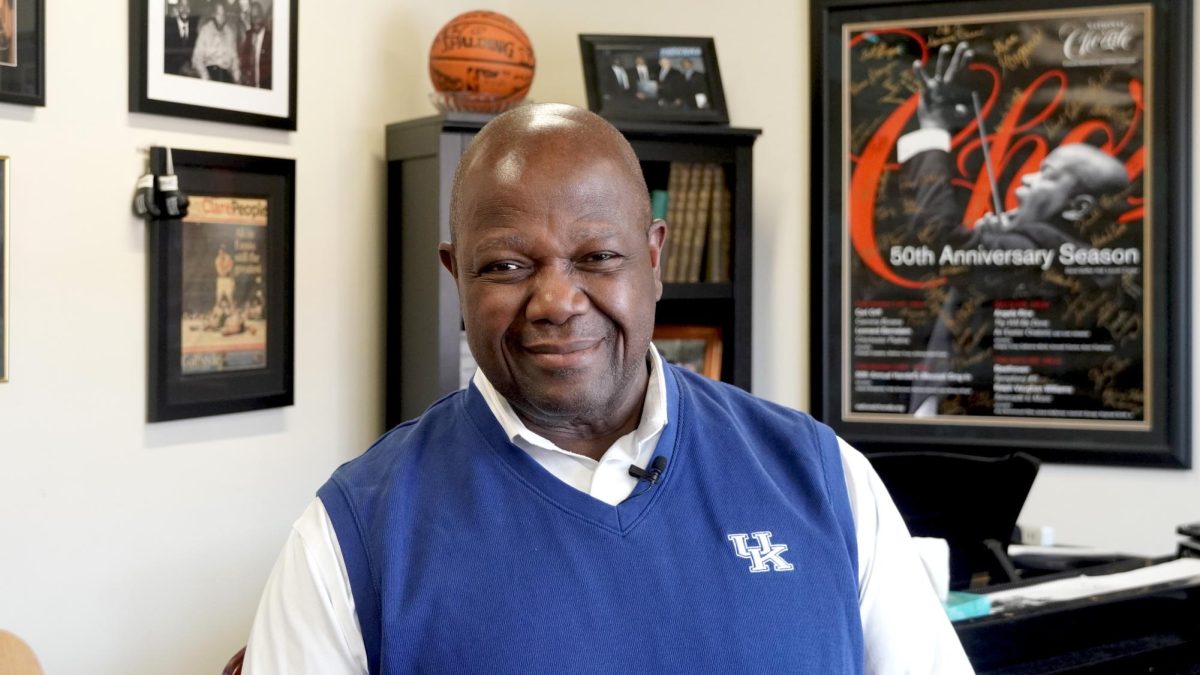It’s the middle of summer in the Mojave Desert in Randsburg, California. In the hot desert air, a crowd stands in a concrete bunker.
Looking through the view of the bunker they can see on a launchpad a blue 6-foot-5 rocket with the University of Kentucky’s logo displayed on its side. Its name: Meridian.
The part of the crowd to whom the rocket belongs waits with anticipation for the rocket to take off. SpaceLex, UK’s Stanley and Karen Pigman College of Engineering’s student rocketry and propulsion team, spent years designing and building the rocket to launch here at the Friends of Amateur Rocketry (FAR) competition.
Very soon, Meridian shoots into the air with bright white and purple flames, up about 5,000 feet. SpaceLex’s launch made first place, their first ever rocket launched in a competition.
“You could hear audible gasps from all of us,” Tatum St. Clair, a senior majoring in marketing research and the business and financial director of SpaceLex, said.
Many of the members who went to the competition, including St. Clair, were not at all confident that they were going to take first place.
“A lot of us come from small towns,” St. Clair said. “All of us being a little more on the countryside of things and not necessarily from the city, we all came out hootin’ and hollering and just celebrating. It was such a big moment for us.”
SpaceLex’s first win at FAR was also their first win at a national rocketry competition. President of SpaceLex, Lucas Stevenson, said he saw teams from Florida, Illinois, California and more.
“Just to see it leave the ground was incredible,” St. Clair said.
Kylie Schmidt, a senior majoring in mechanical engineering and director of systems and integration for SpaceLex, said she felt similarly.
“I would love to say that I knew it was gonna go well and come back down in one piece,” Schmidt said. “But right before you press that launch button everything is going through my head like ‘that thing’s gonna blow up, there’s no way we did that right.’”
Schmidt, St. Clair and Stevenson have all been involved with the design of Meridian since their freshman year in 2019.
The team itself formed around 2019, at the beginning of the COVID-19 pandemic. There were only five members including Stevenson, now a senior majoring in aerospace engineering and math, when he joined after seeing them table at an engineering student organization fair.
Stevenson said his interest in rocketry was sparked from a high school physics class, just the concept of rocketry interested him, and he went into college wanting to get involved.
Schmidt’s introduction to the group was similar. She said she was always fascinated by math and engineering, how they can be used to make things work, particularly rockets and aerospace.
“I was entering college sad that there weren’t a lot of rockets to build, so it (SpaceLex) was the perfect way for me to get my feet wet in the aerospace industry,” Schmidt said.
Schmidt started out as the mechanical lead designing the team’s first rockets.
Designs for Meridian began in 2019, but progress didn’t pick up until a few years after that due to the pandemic. In Stevenson’s junior year, they put everything together to make the physical rocket.
“Being able to see all of it come together into a 6-foot-5 tall, massive thing that works was just really cool,” St. Clair said.
As plans for Meridian and the competition grew, so did the manpower behind SpaceLex.
“My first year it was me in the leadership team, which was like four people … last year it was like 20-30 members, it’s growing for sure,” Schmidt said. “Before we knew it, we were ordering more chairs and more chairs.”
When SpaceLex got its workspace on the top floor of the Terrell Civil Engineering Building it started out with one table.
Stevenson said the SpaceLex team got bigger every year he was in it. Now, he said there are about 30 to 40 members overall.
The FAR competition was something Stevenson and the team said they had been aiming for since the beginning of SpaceLex. With Meridian finally complete, they could finally fly out to California in the summer and launch.
Stevenson, Schmidt, St. Clair and others all went to California for five days; the day before the competition, they all stayed up until 3 a.m. preparing the rocket that they shipped from Kentucky.
They only had a day to unpack, prepare and make last-minute changes to the rocket before they launched it at the competition.
“We had to unbox it out of a FedEx container that we shipped across the country,” Stevenson said.
“It was kind of like crossing the country with a whole bunch of your best friends,” Schmidt said. “It was very chaotic trying to figure out how to ship everything over there, but luckily we have such amazing team members that keep us all on track, like Tatum and Lucas, being at the helm of all of that.”
The rocket scored enough points to get SpaceLex to first place thanks to the team accurately guessing the max height the rocket would get to, and the rocket’s water ballast system designed by Stevenson.
Stevenson said the water ballast was a chamber filled with water inside the rocket which ejects out once it separates, causing it to descend slower and break the rocket’s fall.
Another source of points for SpaceLex was the live video transmission of the launch from the rocket, which the team was still working on the day before the competition.
“We were just hoping it would launch and a parachute would come out … and it far exceeded our expectations,” Stevenson said. “It was so satisfying because we haven’t really been able to show ourselves as a rocket team, we haven’t been put on the map in the rocketry world.”
Coming off of the win, Stevenson says he’s excited for what comes next for SpaceLex, namely the 2025 Spaceport Cup in Las Cruces, New Mexico.
The next competition will be the biggest one yet for SpaceLex, featuring not only teams from all over the country, but also international teams and a much higher height requirement for the rocket.
“This thing’s gonna be so much larger than anything any one of us has built before,” St. Clair said.
She said the upcoming rocket would be 10 feet tall and weigh over 50 pounds, the rocket’s payload will also contain some kind of experiment that can collect data within the rocket that SpaceLex will then also present at the competition.
“It’s gonna be significantly more expensive and a lot more paperwork on my end,” St. Clair said.
She estimated the total cost of travel and of the rocket to be around $32,000, money the team acquired through donations and UK grants like Wildcat Cage, which funds student organizations.
Stevenson said SpaceLex hasn’t yet signed up for the competition but is confident that they will qualify and be able to participate next summer in 2025. He said his goal is to continue leading SpaceLex to bigger goals.
“I’ve looked at the previous presidents after the last few years and (I’m) just trying to mimic what they’ve done … I’m trying to keep us doing new things so that we don’t get bored,” Stevenson said. “This year we’re doing 10,000 feet instead of 5,000 feet so we’re being offered new challenges.”
The required height for the rocket to reach is double the amount Meridian attained at FAR, Stevenson said even 5,000 feet was impressive to watch.
“You could barely see it with your eye, so 10,000 is gonna be way high up,” Stevenson said.
With membership continuously growing and an international competition in sight, SpaceLex is already reaching well past its first goal to establish UK as a presence in rocketry.
“It’s hard to say things that aren’t just full of love for this team,” Schmidt said. “It’s an incredible chance to be surrounded by some of the best rocketry in the country or, pardon me – some of the best rocketry in the world.”














